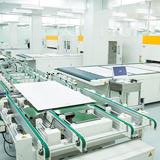

One, the choice of screen frame
There are generally two types of screen frames: wooden frames and aluminum alloy frames: wooden frames are relatively cheap and easy to operate, suitable for manual printing, but the printing quality is relatively poor, because the net drawn out of the wooden frame is easy to loosen, reducing the return of the screen. Elastic; aluminum alloy screen frame is relatively expensive, but aluminum alloy screen frame has good stability and light weight, suitable for manual screen printing, screen printing, and clothing printing.
Second, the choice of net yarn
The screen materials include polyester screen and nylon screen,
1. Polyester screen (polyester)
characteristic:
A Low tensile strength (tension)
B Good wear resistance, not complicated for the climate
C Strong acid resistance (sulfuric acid, hydrochloric acid, nitric acid), and can withstand general solvents
2. Nylon wire mesh
characteristic:
A Very strong wear resistance (bad wear resistance for rough or curved surfaces)
B Good surface tension and high resilience
C Good solvent resistance
D Relatively strong alkali resistance
In addition to polyester wire mesh and nylon wire mesh, wire mesh materials now have metal wire mesh and composite wire mesh. Then the technical development field of silk screen has developed to a deeper and larger space. We can use screen printing technology to print mobile phone displays, solar panel printing, membrane switches, circuit board printing, EL light-emitting film printing (cold light film) and so on.
Third, the standard method of stretching the net
The screen can be stretched to the desired tension value within 1-3 minutes, but before the screen is fixed to the aluminum alloy frame, it needs to be stretched and waited for more than 15 minutes.
Therefore, repeating this process several times will reduce the loss of tension in the future. After the maximum tension is reached, the mesh is finally fixed by applying adhesive mesh.
The tension of the screen is an important factor to ensure accurate overprinting and determine the appropriate screen distance.
Generally speaking, the higher the mesh, the finer the mesh, and the thicker mesh is stretched tighter than the fine mesh.
Generally, the overprinting screen requires 24 hours after the screen is drawn, and then the screen is exposed to allow the mesh to rebound to a stable value, otherwise there will be inaccurate overprinting or distortion of the graphics.
The choice of mesh: For the material of the screen, we generally choose nylon screen and polyester screen.
Four, cleaning mesh
Cleaning the screen generally uses special cleaning chemicals. First, wipe the front and back sides of the screen frame with a degreasing agent in place, and then polish it with a mesh paste. This has another advantage, which is conducive to the adhesion of the photosensitive paste. Remember to polish on both sides, and for the front packaging and decoration, the force must be light when polishing to prevent the mesh from falling off. Then rinse with the water gun and put it in the dryer for drying.
Five, apply photosensitive paste
Judging from our experience in the industry, we have chosen more of the photoresist of Murakami AD20 from Japan, and the effect is very good. You can also choose better brand manufacturers, such as Murakami, Tian Ling, and Kotutai. If there are certain requirements for the thickness of the screen film, we can choose water film to make the screen.
We first mix the photosensitizer and colloid with suitable clean water. After 30 minutes of standing, use the sizing machine to evenly coat the front and back sides of the mesh twice to collect the glue, and place it in an oven to dry at a low temperature of 45 degrees. Then coat the front and back of the screen frame twice and dry it.
Six, exposure and development
Put the silk screen film on the screen in the correct direction and position, preset the exposure time, after exposure, first soak the plate with clean water for about 1-2 minutes, and rinse off the unexposed photoresist with a water gun. The group case has been revealed.
Tel:15158365810
HTML:www.mysyqc.com
Add:No.185, bridge 3 road, xiaoqiaotou village, qiaotou town, cixi city